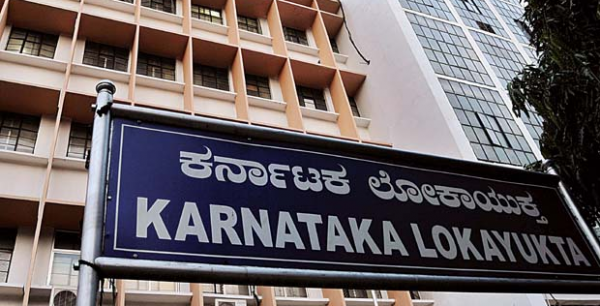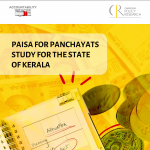
The Karnataka Lokayukta and the Dilution of Accountability
1 June 2022
A few weeks back, a contentious issue hit the headlines in Bengaluru. The state government withdrew nearly all its police officers, of the rank of Superintendents and Deputy Superintendents, from the Karnataka Lokayukta which is the state’s anti-corruption agency and Ombudsman. Three months earlier, the last incumbent of the position of the Lokayukta had demitted office on the attainment of the age of 75 years, which is the retirement age.
There is a reason why this act, which would be considered unfortunate in any state, is particularly deplorable for Karnataka. It was the first state to constitute a Lokayukta in 1984. The then Chief Minister, Ramakrishna Hegde, was considered to not be a run-of-the-mill politician. Suave, polite, and principled, at least at first sight, he coined the term ‘Value Based Politics’ and took some steps that were widely regarded as far-reaching reforms. One of those was to constitute the Karnataka Lokayukta.
The institution of the Lokayukta was a combination of an anti-corruption agency and an Ombudsman. It was to be headed by a retired Supreme Court Judge or a retired Chief Justice of the High Court, in the selection of whom the Chief Minister was to mandatorily consult the Chief Justice, the Speaker of the Legislative Assembly, the Chairperson of the Legislative Council and the Leader of the Opposition, before recommending the name of the chosen individual to the Governor. To give the Lokayukta the prime responsibility to tackle corruption, the government’s internal Vigilance Commission was abolished.
There is no doubt that the institution was powerful. The Lokayukta had the power to investigate allegations about corruption from the Chief Minister downward as well as to investigate grievances that were raised before it by affected citizens. Furthermore, if the law were to be read generously, it could expand its scope to be an administrative reform commission.
The latter was an especially promising opening, which was explained to me by a former Lokayukta, Justice Venkatachala.
Section 7 of the Act stated the matters that may be investigated by the Lokayukta and an Upalokayukta. These included any action which is taken by or with the general or specific approval of the Chief Minister, a minister, a member of the state legislature, chairpersons of authorities boards, and so on, where a complaint involving a grievance is made in respect of such action. An investigation could also be undertaken into the acts of other public servants as detailed in the Act, not only where a complaint is given regarding a grievance, or where the Lokayukta, for reasons recorded in writing, opines that it is the subject of a grievance.
As can be seen, the keyword in these empowering provisions is that there ought to be a grievance, which triggers an investigation.
The word ‘grievance’ is defined in Section 2 (8) of the Karnataka Lokayukta Act, as “a claim by a person that he sustained injustice or undue hardship in consequence of mal-administration”. ‘Mal-administration’, in turn, is defined in Section 2(10) of the Lokayukta Act as:
“….action taken or purporting to have been taken in the exercise of administrative function in any case where, such action or the administrative procedure or practice governing such action is unreasonable, unjust, oppressive or improperly discriminatory; or there has been willful negligence or undue delay in taking such action or the administrative procedure or practice governing such action involves undue delay…”
Thus, it stood to reason that a full and effective investigation into a grievance could also probe into the causes of the mal-administration that caused such grievance to arise, and make suggestions as to how such mal-administration might be cured so that the scope for future grievances are reduced.
With such powerful provisions in the law to empower it, it was not long before tension arose between Lokayuktas and the government. Proactive Lokayuktas began to inspect offices, which led the government to react by asserting that Lokayuktas could only investigate grievances. Yet, one pro-active Lokayukta was able to conduct a high-quality investigation into irregularities in mining and other land-related corruption, which ended up with a Chief Minister of the state being jailed and having to resign from his high office.
Clearly, something had to be done to curb the independence of the Lokayukta. The plan to neutralise it was hatched and executed with skill. It was not an abrupt amputation, but slow strangulation.
First, in 2016, an Anti-Corruption Bureau was set up within the state policing system, under the Home Department. The ostensible reason for setting it up was that the Lokayukta was swamped with work, and hence, anti-corruption action was better handled outside the Lokayukta. Then, came the recent decision to remove high-ranking police officers from the Lokayukta and withdraw them to the state.
This cropping of the organisational capacity of the institution has come at a time when the post of Lokayukta has been kept vacant for three months now.
The public has reacted cynically, but there is more than mere headshaking to be done at this crippling of an institution that promised to be an effective bulwark against spreading corruption. How should such institutions be designed? What are the good practices in designing and operating an effective anti-corruption commission?
There is a lot to be learned here, from the experience of other countries where corruption has been effectively tackled. This subject and its various facets will be examined in subsequent blogs.
T.R. Raghunandan is an Advisor at the Accountability Initiative.
Read the next blog in the series: Are Anti-Corruption Commissions Effective?





